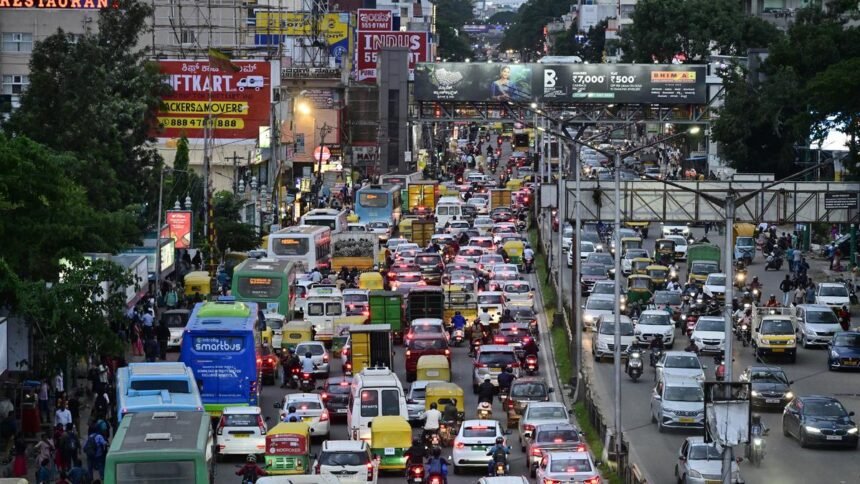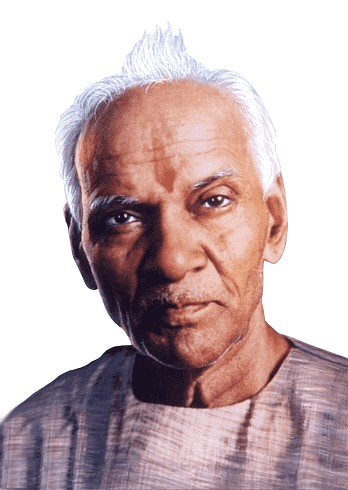The absolute chaos that followed the floods on the streets of Bengaluru was predictable. The only surprising thing is why it causes tremors. But as the surge in new vehicle registrations continues unabated, will transforming cities’ traffic management systems with artificial intelligence (AI) and other technological interventions be effective? Recent installations of artificial intelligence sensors, with mixed results, only make the system more complex.
The Bangalore Traffic Police (BTP) said new artificial intelligence traffic signals have reduced travel time at major intersections by one-third. But reports from the ground suggest the impact is far less severe. A public verdict on the Bangalore Adaptive Traffic Control System (BATCS) is yet to come out, even as experienced traffic planners seek a more traditional approach to synchronized signals.
The project, launched in May this year, uses adaptive signals with camera sensors to track real-time traffic flow and adjust red and green lights accordingly. Unlike fixed time, time is dynamic. As of now, traffic lights have been installed at 60 intersections. BTP proposes to expand the system to 165 intersections by January 2025 and 250 by March.
Rush hour challenges
If the vehicle load is controllable, AI-based signals can work well. But traffic conditions at intersections across the city during rush hour are not like that. BTP claims that adaptive signals operate automatically most of the time. During peak hours, Vehicle Actuation Control (VAC) or Adaptive Traffic Control System (ATCS) are activated.
During morning and evening rush hours, traffic at most intersections is saturated. Dr Ashish Verma, transportation expert and convener of the Sustainable Transportation Laboratory at the Indian Institute of Science (IISc), explained that this means vehicles have to wait for multiple signal cycles to pass. “In this case, the traffic flow will exceed the intersection’s capacity. Here, the impact of artificial intelligence on travel time is negligible.
The only way out is to increase intersection capacity by reducing vehicle load, which is an almost impossible task today. “Only then can you optimize functionality. Artificial intelligence may provide some help during off-peak hours. But it must be supported by proper planning and policies to control the number and usage of vehicles,” opined an experienced traffic analyst.
Artificial Intelligence Transportation | Photo Credit: Rashid Kapan
Algorithms unfamiliar to Indian traffic
In addition, there are hardware issues. Artificial intelligence sensors may sound exotic, but are they based on algorithms relevant to traffic conditions on Indian roads? As Dr. Ashish points out, “Traditionally, these algorithms for optimization and timing decisions were developed based on Western traffic conditions. For example, it is assumed that at an intersection, vehicles will follow a strict first-in, first-out (FiFo) queuing pattern and rules. That is, if you arrive at the intersection first, you will get off first.
The streets of Bengaluru are notorious for their lack of lane discipline and FiFo is still an alien concept to most vehicle users. “Because we don’t have lane separation for left and right turners, and the mix of vehicle types is very diverse, gap-filling behavior is very common. You might arrive early, but someone else will fill the gap and go ahead of you.
Signal synchronization
Deputy Commissioner of Police (ADGP) MA Saleem, who has been closely tracking and managing traffic in the city for decades, said signal-sign synchronization is an effective way out. “Only signal synchronization can help in Bengaluru because the traffic volume is much greater than the capacity of the roads. I don’t think any technology can solve this problem,” he pointed out.
During 2011-12, the city traffic police under Salim synchronized the traffic corridor from Minerva Circle to Mysore Bank Circle. “Along this corridor, you can see green lights at six consecutive intersections. It helped us reduce congestion. In 2022, when I came back as the city’s special commissioner, I did it again,” he recalled.
Synchronization works most efficiently in one direction through a series of connection points equipped with two-phase signal cycles. “There are six such signals on JC Road and vehicles have a uniform time to pass. Vehicles leaving Minerva Circle will receive an automatic green light at Bharat Junction and then again at Shivaji Junction until they reach Mysore Bank Circle .The other corridors we have designed are from Corporation Circle to Lalbagh Main Gate and from Peenya to 8th Mile.
Best for priority corridors
Dr Ashish agreed that the system would be particularly effective for priority corridors. “For example, if you want vehicles on MG Road to continue along the signal chain, synchronization ensures faster throughput. The green light is timed in such a way that when a row of vehicles comes from the first signal, when that When the platoon reaches the second signal, you’ll see a green light, and the same goes for subsequent signals, so it can at least help relieve congestion along the main priority corridor.
However, he warned this could have an impact on other intersections, causing queues and delays. “But under saturated traffic conditions, the effectiveness of synchronization is still limited. Unless the number of vehicles is reduced, the intersection cannot escape saturation.
no significant changes
For Vishwanath H., an auto user who commutes between his residence in Ramamurthynagar and his office on MG Road every day, there is no noticeable change in traffic management. “I was told that when a certain level of traffic arrives at the intersection in a specific way, the new AI signal will automatically change and the traffic will move. Or the AI sensor will show green even if pedestrians are waiting. Honestly, I don’t think that’s going to happen,” he said.
He felt the city’s traffic had reached a point where it could no longer be managed. “The system gets confused by the sheer number of vehicles because these things are made for the rest of the world. Also, because the city’s roads have gotten so bad, traffic slows down a lot before it even reaches the intersection. They get there before it rains. It was mediocre and now it’s all been washed away,” he sighed in resignation.
Published – November 8, 2024 at 09:00 AM (US Standard Time)

